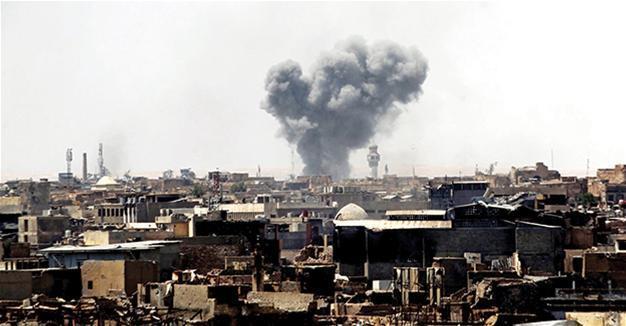Iraqi forces launch final assault on ISIL-held Mosul Old City

Iraqi forces began storming the Islamic State of Iraq and the Levant (ISIL)-held Old City of Mosul on June 18, an assault they hope will be the last in the eight-month campaign to seize the militants’ stronghold.
The historic district is the last still under control of the militants in the city which used to be their capital in Iraq.
It is a densely-populated maze of narrow alleyways where fighting is often conducted house by house.
About 100,000 civilians remain trapped there in harrowing conditions, with little food, water and medicine and limited access to hospitals, according to the United Nations.
“This will be a terrifying time for around 100,000 people still trapped in Mosul’s Old City ... now at risk of getting caught up in the fierce street fighting to come,” the International Rescue Committee (IRC) said in a statement.
“This is the final chapter” in the offensive to take Mosul, said Lieutenant General Abdul Ghani al-Assadi, commander of the Counter Terrorism Service (CTS) elite units spearheading the assault.
A U.S.-led international coalition is providing air and ground support to the campaign.
Several air strikes during the day hit a medical complex located just north of the Old City, alongside the western bank of the Tigris river, a Reuters TV reporter said.
Armored vehicles were heading toward the frontline north of the Old City as shelling and gunfire could be heard.
The medical complex, housing the two biggest hospitals of Mosul, is still held in part by the militants who are using its buildings as sniper outposts.
ISIL’s security services chief in the Old City, Kanaan Jiyad Abdullah aka Abu Amna, was killed in the morning clashes, Hisham al-Hashimi, who advises several Middle East governments on ISIL affairs, told Reuters.
The Iraqi government initially hoped to take Mosul by the end of 2016, but the campaign took longer as militants dug in the middle of civilians to fight back.
ISIL is also using suicide car and motorbike bombs, booby traps and sniper and mortar fire against the troops.
“The buildings of the old town are particularly vulnerable to collapse even if they aren’t directly targeted, which could lead to even more civilian deaths than the hundreds killed so far in air strikes across the rest of the city,” the IRC said.
“We are trying to be very careful, using only light and medium weapons ... to avoid casualties among civilians,” CTS commander Major General Maan Saadi told Iraqi state TV.
Hundreds of civilians were killed near the frontlines in the past three weeks while fleeing the Old City, as Iraqi forces couldn’t fully secure exit corridors.
“We expect thousands of families to escape from the Old City; we made all preparations to evacuate them from the frontlines,” army colonel Salam Faraj told Reuters.
ISIL snipers are shooting at families trying to flee on foot or by boat across the Tigris River, as part of a tactic to keep civilians as human shields, the U.N. said on June 16.
The Iraqi army thinks the number of ISIL fighters in the Old City doesn’t exceed 300, down from nearly 6,000 when the battle of Mosul started, on Oct. 17.
“The operation now is about street fighting, air and artillery strikes will be limited because the area is heavily populated and the buildings fragile,” CTS spokesman Sabah al-Numan told al-Hadath TV in Dubai.
Iraqi government forces regained eastern Mosul in January, then a month later began the offensive on the side located west of the Tigris, which includes the Old City.
The fall of Mosul would, in effect, mark the end of the Iraqi half of the “caliphate” that ISIL leader Abu Bakr al-Baghdadi declared in a speech from an historic mosque in the Old City three years ago, covering parts of Iraq and Syria.
 Iraqi forces began storming the Islamic State of Iraq and the Levant (ISIL)-held Old City of Mosul on June 18, an assault they hope will be the last in the eight-month campaign to seize the militants’ stronghold.
Iraqi forces began storming the Islamic State of Iraq and the Levant (ISIL)-held Old City of Mosul on June 18, an assault they hope will be the last in the eight-month campaign to seize the militants’ stronghold.